Scientists Switzerland
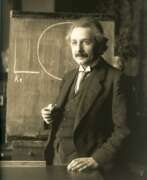

Albert Einstein was a German-born theoretical physicist, widely acknowledged to be one of the greatest and most influential physicists of all time. Einstein is best known for developing the theory of relativity, but he also made important contributions to the development of the theory of quantum mechanics. Relativity and quantum mechanics are together the two pillars of modern physics. His mass–energy equivalence formula E = mc2, which arises from relativity theory, has been dubbed "the world's most famous equation". His work is also known for its influence on the philosophy of science. He received the 1921 Nobel Prize in Physics "for his services to theoretical physics, and especially for his discovery of the law of the photoelectric effect", a pivotal step in the development of quantum theory. His intellectual achievements and originality resulted in "Einstein" becoming synonymous with "genius".
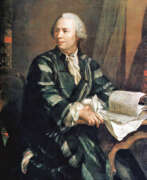

Leonhard Euler was the greatest mathematician of the 18th century and history in general.
Euler brilliantly graduated from the University of Basel and entered the St. Petersburg Academy of Sciences, then began to work at the Berlin Academy, and later to lead it. In 1766, the scientist received an invitation from the Russian Empress Catherine II and again came to St. Petersburg to continue his scientific work.
Here he published about 470 works in a wide variety of fields. One of them is a large-scale work "Mechanics" - an in-depth study of this science, including celestial mechanics. Euler by that time was practically blind, but continued to be actively engaged in science, in the records he was helped by his son Johann Albrecht and stenographers. Leonhard Euler made many fundamental discoveries that brought great benefit to mankind.
His massive contribution to the development of mathematics, mechanics, physics and astronomy cannot be overestimated, and his knowledge in the most diverse branches of science is admirable. During his lifetime, he published more than 850 works that contain in-depth studies of botany, chemistry, medicine, ancient languages, and music. Euler held membership in many academies of science around the world.
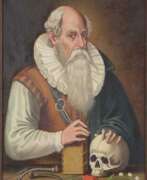

Wilhelm Fabry von Hilden or Fabricius von Hilden (Latin: Fabricius Hildanus) was a German and Swiss Renaissance physician and surgeon, the founder of scientific surgery.
In 1576 he began a four-year apprenticeship as a surgeon with a barber in Neuss. Surgery at that time was considered the craft of bath and barbers; surgeons or wound doctors treated wounds, broken bones, inflammations, and many other ailments. After completing his apprenticeship, Fabry worked for five years as an assistant wound surgeon to Cosmas Slot (died 1585) at the court of Duke Wilhelm V in Düsseldorf. To expand his anatomical knowledge, Fabry constantly dissected and prepared cadavers. In later years, he also encouraged his students to do so and conducted public autopsies to draw attention to the importance of anatomical knowledge. He also made it a habit to do practice procedures on a cadaver before surgery.
In 1615 Fabry was appointed city physician of Bern. Here he wrote several books on gunshot wounds. In 1623 the versatile physician published a small book, "Christian and Good-Hearted Caution against Drunkenness," which he republished in more detail the following year under the title Christlicher Schlafftrunck. Fabry's most important surgical treatise was Observationem et curationem chirurgicam centuriae sex ("Six hundred surgical observations and cures"), first published in 1606. This compilation remained the most important book of German surgery until Lorenz Heister. It describes new surgical methods and surgical instruments for the treatment of amputations, nasal polyps, bladder stones, dropsy, hernias, ascites, etc., etc., etc.
For centuries, Fabricius remained one of the most respected surgeons not only in Germany and Switzerland, but throughout Europe. Among his many accomplishments in the field of surgery may be enumerated his innovation in the amputation of the thigh, for which he invented a special tourniquet; the excision of involved axillary glands in breast cancer; the first classification of burns into three degrees with the appropriate treatment for each variety; and the first description of a medical field chest for military purposes.
Although in his later years Fabritius had already given up practicing medicine, he continued to write medical papers and maintain an active scientific correspondence until his death. He authored some 20 medical books. It was his surgical works, translated into German, French, Latin, English and Dutch, that ensured his recognition centuries later.
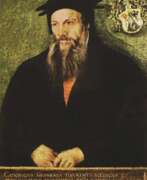

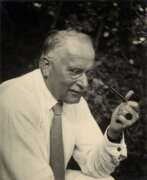

Carl Gustav Jung was a Swiss psychologist and psychiatrist, professor, and the founder of analytical psychology.
He studied at the University of Zurich and conducted many studies in scientific psychology and psychiatry. From 1907 to 1912, Jung was a close associate of Sigmund Freud, but later they had serious disagreements and parted ways.
Carl Jung proposed and developed the concepts of extraverted and introverted personality, archetypes and the collective unconscious. He introduced the term "collective unconscious" as a part of the mind containing memories and impulses of which the individual is unaware, common to humanity as a whole and deriving from inherited brain structure. It differs from the personal unconscious, which arises from the experience of the individual. According to Jung, the collective unconscious contains archetypes, or universal primordial images and ideas.
Historical research helped Jung pioneer psychotherapy for middle-aged and elderly people, especially those who felt their lives had lost meaning. He helped them appreciate the place of their lives in the sequence of history. Jung devoted many years of his life to developing his ideas, especially those concerning the relationship between psychology and religion. His work had a significant impact on psychiatry and the study of religion, literature, and related fields.
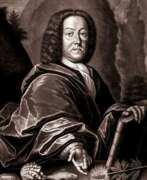

Johann Jakob Scheuchzer was a Swiss naturalist and geologist, paleontologist and fossil collector.
Scheuchzer studied at the University of Altdorf near Nuremberg, earned a doctorate in medicine at Utrecht University, and studied astronomy. He worked as a teacher, physician, and corresponded extensively with many scientists, writing several papers, including those on Swiss research, weather, geology, and fossils. Scheuchzer collected fossils during his extensive travels. And, as a proponent of diluvialism, he believed that all fossils and layers of the earth were formed by the Flood.
Between 1731 and 1735, Scheuchzer published a massive four-volume work called Physica Sacra, which is essentially a commentary on the Bible. It presented the facts of natural history along with passages of scripture. Thus Physcia Sacra attempted to reconcile the Bible with science.
This book is also called the "Copper Bible" because it contains over 750 magnificent color engravings on copper plates. These engravings are in themselves the pinnacle of engraving from the Baroque period. The illustrations depict scenes with biblical and scientific motifs. They were based on his own cabinet of natural history and other famous European cabinets of rare specimens. The engravings were produced by highly skilled engravers, including Georg Daniel Heumann and Johann August Corwin.
During his lifetime, Johann Jakob Scheuchzer wrote 34 scientific papers and many articles, and he was a member of the Royal Society.



